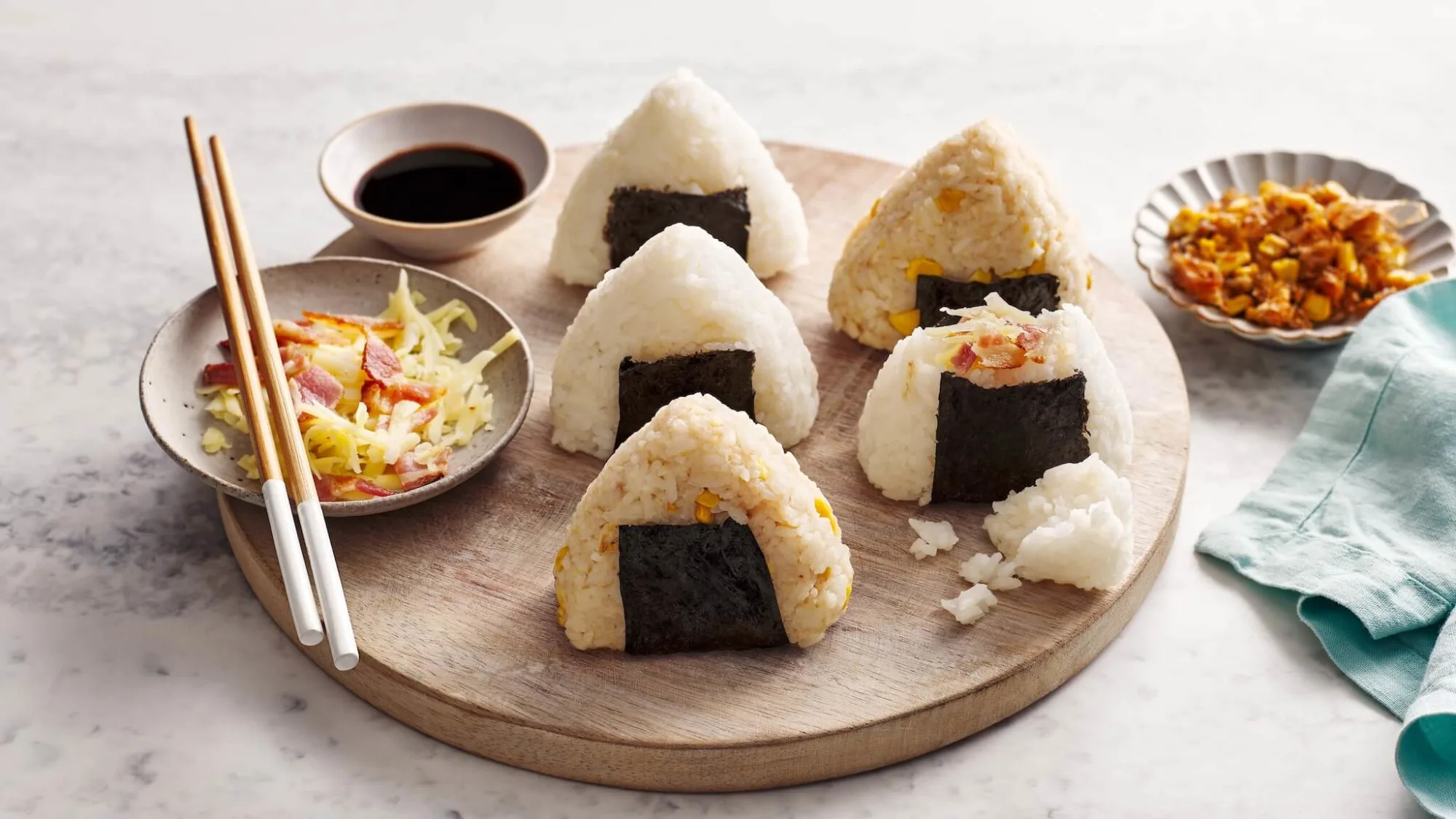
Onigiri
Rice balls filled with various ingredients.
Ingredients
- •Japanese rice
- •Nori
- •Umeboshi
- •Salt
- •Sesame seeds
Instructions
Shape Rice
Form rice into triangles with filling
Wrap
Wrap partially with nori
Onigiri, also known as rice balls, are a quintessential Japanese snack that is both delicious and convenient. These delightful treats are made by shaping seasoned rice into triangular or cylindrical forms and filling them with a variety of ingredients such as umeboshi (pickled plum), salmon, or tuna with mayonnaise. The rice balls are then wrapped partially with nori (seaweed) for added flavor and ease of handling.
The history of onigiri dates back to ancient Japan, where they were originally made as a portable meal for travelers and soldiers. Over time, onigiri has become a beloved staple in Japanese cuisine, enjoyed by people of all ages. They are commonly found in convenience stores, bento boxes, and even high-end restaurants across Japan.
Making onigiri at home is simple and fun. Start by cooking Japanese rice until it is sticky and slightly firm. Once the rice has cooled slightly, wet your hands with a mixture of water and salt to prevent sticking, and shape the rice into your desired form. Create a small indentation in the center of the rice ball and add your chosen filling. Finally, wrap a strip of nori around the rice ball for added flavor and texture.
Onigiri can be customized in countless ways to suit your taste. You can experiment with different fillings such as grilled eel, pickled vegetables, or even cheese. Additionally, you can season the rice with furikake (Japanese rice seasoning) or mix in ingredients like sesame seeds or chopped herbs for extra flavor.
In Japan, onigiri is often enjoyed as a quick snack, a light meal, or as part of a larger bento box. They are perfect for picnics, school lunches, or as a convenient on-the-go meal. Onigiri pairs well with a variety of side dishes such as miso soup, pickles, and green tea.
While onigiri is a healthy and nutritious option, it is important to be mindful of the ingredients used. Some fillings, such as umeboshi, can be quite salty, and certain variations may be higher in calories due to added ingredients like mayonnaise or fried components. However, when enjoyed in moderation, onigiri can be a balanced and satisfying part of your diet.
Overall, onigiri is a versatile and beloved dish that offers a taste of Japanese culture in every bite. Whether you enjoy them plain or with creative fillings, onigiri is sure to delight your taste buds and provide a convenient and delicious meal option.
